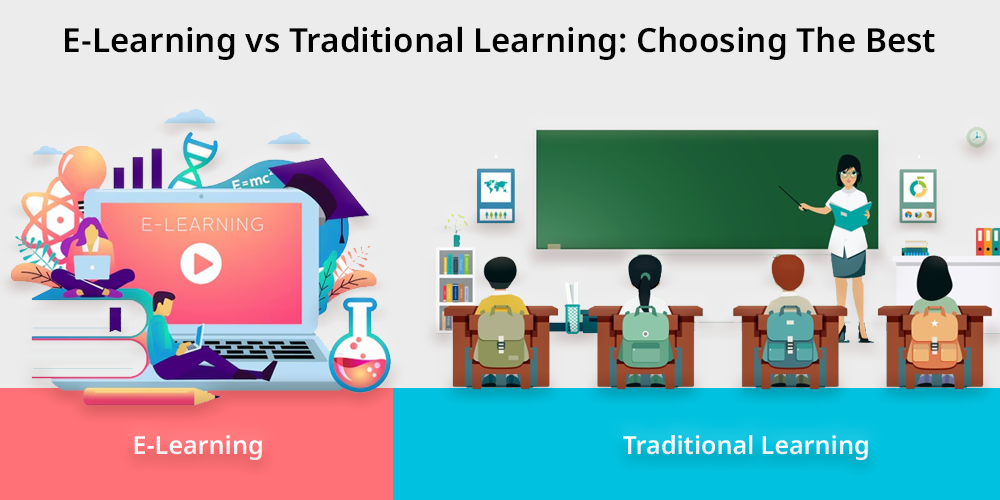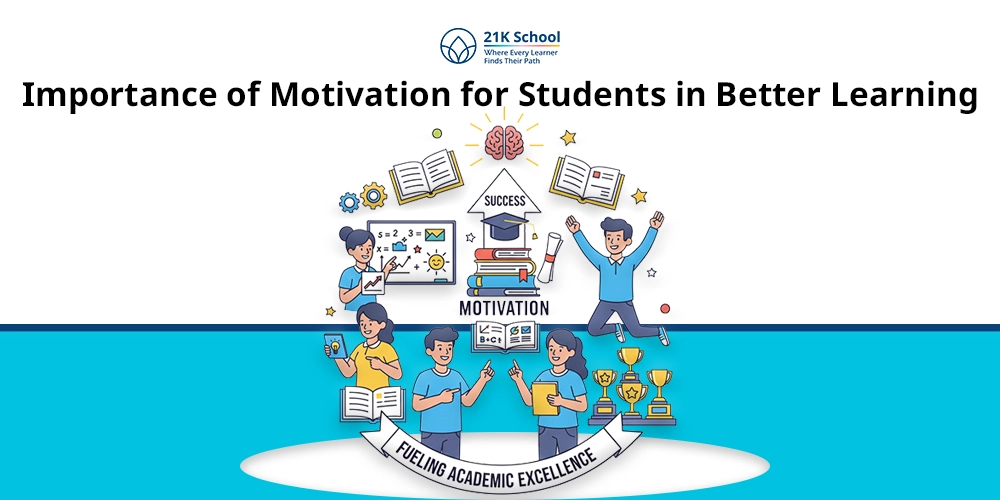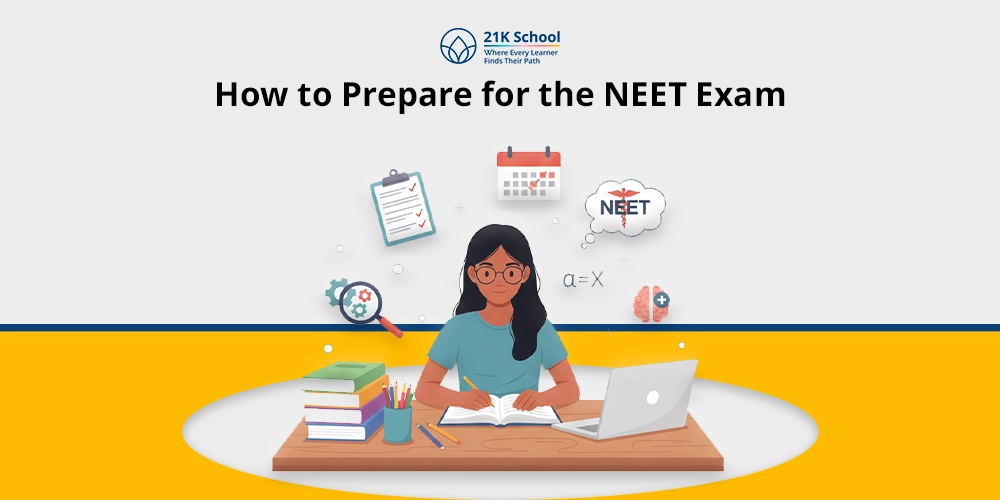
Over the last several decades, education has changed a lot mainly because of advances in technology. One major change is e-learning or online education which gives students an option besides the standard classroom.
Traditional learning has always been the norm. But e-learning allows everyone to study in a way that suits them, making it easier to compete with in-person programs.
Anyone involved in education should know the details of each learning mode. And also what today’s students and their families can achieve with each one.
This article considers the main differences between e-learning and traditional learning. It also discusses what each does best and limitations that need attention..
Contents
What does E-Learning mean?
Using e-learning, instruction and educational content are delivered through online platforms and systems. Types of online learning are digital classes, virtual rooms, webinars, videotaped tutorials and learning apps.
With e-learning, individuals can study on their own time and it is either instructor-led or self-guided through the internet.
Its ease of use, wide reach and advanced features are why people choose it for education in schools, universities, businesses and careers.
What is Traditional Learning?
Traditional learning happens when students are taught face-to-face in classrooms. A teacher gives instructions to several students as a group at the same time.
It focuses on organization in teaching materials, regular schedules, interacting socially and one-to-one mentoring.
Many schools, colleges and universities around the globe still use this approach as the main teaching method.
Difference Between E-Learning and Traditional Learning
Other than the flexibility that e-learning provides, traditional learning presents several differentiations between these two. The following table and feature-wise contradictions tell how and why these are preferred by different individuals.
| Factors | E-Learning | Traditional Learning |
| Mode of Delivery | Through online classrooms, virtual sessions and multimedia content | Through in-person lectures, traditional classrooms, and textbooks |
| Flexibility and Accessibility | Easily accessible and flexible to your schedule and pace | Rigid curriculum and accessible to physically present ones |
| Involvement and Engagement | Lesser interaction through online lectures and chats | Face-to-face interactions with peers and teachers |
| Pace of Learning | Self-managed pace of learning | Same for the whole class, managed by teacher |
| Expense | Lower costs due to no requirement of infrastructure and long commutes | Higher costs due to presence of housing and transport |
| Assessment and Evaluation | Online quizzes, tests, assignments, automated grading system | Teacher-based evaluation through oral and written tests, and assignments |
| Networking and Social Skills | Limited due to no real life interactions, only through virtual meetings | In-person meetings and collaborative skill building |
| Learning Environment | Safe but with potentials distractions | Fixed classroom setup for everyone |
| Technology and Tools | Dependency on digital tools like video conferencing, LMS, etc. | Follows primary tools like textbooks, blackboards, etc. |
| Suitability for Varied Learners | Best for working students, remote learners, or self-motivated students | Ideal for students who benefit from hands-on learning, and structured schedule |
1. Delivery Mode
- E-learning: It is shared online on Zoom, Google Classroom and similar platforms. The lessons are taught with videos, PDF files and many interactive activities.
- Traditional Learning: Happens in school buildings with instructors leading students directly and using textbooks, blackboards and classroom debates.
2. Flexibility
- E-learning: High degrees of flexibility are possible. Most students are able to learn whenever and wherever is convenient for them using online recordings.
- Traditional Learning: The schedule is strict with settled times for classes. It is important for students to take part in classes as they happen and stick to the set deadlines for both assignments and exams.
3. Social Interaction
- E-learning: With e-learning, there is not much opportunity for peer-to-peer interaction. Most communication happens in forums, through chatting or by doing video meetings which may not be as personal.
- Traditional Learning: Encourages students to work with others in school discussions, activities and events to build their social and emotional skills.
4. Accessibility
- E-learning: Access to e-learning can be gained anywhere in the world with internet support. Made for students who are unable to attend traditional school such as those who are too sick or too far away.
- Traditional Learning: You have to be in the same place to gain new knowledge. Being in the same room as the teacher is sometimes hard for students where resources are limited.
5. Learning Resources
- E-learning: It provides eBooks, numerous forms of multimedia, quizzes and tools that can be updated anytime. People are often involved in the experience through the content given.
- Traditional Learning: Education mainly comes from books, paper notes and the teacher’s explanations. Developers may find it hard and time-consuming to update their content.
6. Cost
- E-learning: It is often easier on the pocket than going to a campus. Lowers costs by not requiring students to commute, get a place to live or purchase books and other learning materials.
- Traditional Learning: You may have extra expenses for travel costs, uniforms, pieces of paper and sometimes the tuition is higher.
7. Teacher Availability
- E-learning: Students can use e-learning when it suits them, as it is usually done asynchronously. When sessions are not live, answers will not be available right away for students unless teachers can be reached online.
- Traditional Learning: Supports students with help and answers from the teacher right when needed in class.
8. Personalization
- E-learning: With AI and adaptive learning algorithms, e-learning adapts to a student’s pace and level of difficulty, depending on their achievements.
- Traditional Learning: It is harder to modify learning because classes are often large and the teaching is identical for everyone.
9. Hands-on Learning
- E-learning: Lacking the chance for students to participate in experimental science and art activities. Some matters need the engagement of different physical elements for proper improvement.
- Traditional Learning: Helps students learn through hands-on activities, art, science experiments and physical exercise.
10. Extracurricular Activities
- E-learning: Frequently does not include organized extracurricular activities like sports, drama or music clubs.
- Traditional Learning: Suggests being involved in different activities beyond school to boost your personality and pick up extra skills.
11. Commuting
- E-learning: You don’t need to travel to classes. Students can learn from the convenience of being at home or elsewhere that is calm.
- Traditional Learning: Students need to travel daily which may be time-consuming, costly and dangerous.
12. Risks to Health
- E-learning: Less chance of catching illnesses because everyone communicates online.
- Traditional Learning: When students attend regular classes, their exposure to infections is higher due to being in crowded schools with poor hygiene.
Pros of E-Learning
The above definition shows how e-learning has made its place in the current education system. Let’s discuss a few more advantages of e-learning and find the reasons for its boom.
1. Flexible Schedule
One of the best things about e-learning is that you can manage your time however you wish. Learners can use the platform anytime which is ideal for working people, parents and those who live in remote regions.
Get the tips for creating a homeschooling schedule when your kid learns at their own pace and space.
2. Easy Accessibility
All you have to do is connect to the internet and use a device to gather lots of knowledge. E-learning overcomes location challenges and ensures that people in remote, undeveloped or other nations can learn.
3. Personalized Learning
Many online learning sites use technology that personalizes content according to a student’s performance, pace of learning and preferences. This improves the effectiveness and interest in the learning process.
Personalised learning is another thing that fascinates current day students and thus needs to be implemented in all education systems.
4. Varied Courses
There are many subjects and certifications available on digital platforms. There are thousands of online courses about AI, business, art and languages from universities and professionals all over the world.
5. Safe Environment
Since e-learning happens at home, students gain protection from viruses, tricky journeys and bullying. Especially at a time when public health is a concern.
Cons of E-Learning
E-learning has its own complications that limits its potential into becoming the one stop solution for grasping education in present times. These drawbacks include:
1. Limited Socialization
A major problem with online learning is that students do not get to meet their teachers or mates in person. It might stop students from bettering their skills in communicating, forming friendship bonds and being part of a group.
However, there have been cases where it’s seen how online school helps children with social anxiety . These children find it difficult to sit in a social setting.
2. Missing Experiential Learning
Providing hands-on opportunities for subjects such as science, geography and sports is often not possible for e-learning platforms. Virtual simulations, and other tools do not suffice the real-world experience of real field work.
Read on to find the benefits of experiential learning and why it is required in training of students.
3. Trouble with Self-Discipline
Student discipline is often hard to attain without a structured schedule or curriculum. Without set lessons or help from a teacher, many students find it challenging to stay focused and may not do as well academically.
4. Technological Barriers
High-speed internet, laptops and skills in using technology are not available to everyone. In India and other similar places, e-learning remains limited by the problems associated with digital technology.
5. Fewer extracurricular activities for kids
Unlike regular schools, online learning does not include sports, music or art clubs. And this can affect how a student grows as a person.
This can be managed through multiple online competitions including exhibitions, or online group projects
Pros of Traditional Learning
Traditional learning due to its fixed structure and curriculum serves millions of students. The following benefits of this conventional learning are discussed below:
1. Structured Curriculum
Classes held in a classroom offer proper organization, using set schedules, classroom order and a planned curriculum. These are organized by teachers and administrators of the education system being followed for years.
2. Social Skill Development
Student maturity is enhanced when they connect with their peers in group discussions, activities and by participating in school events. These social skills further teach team-management, and help in building positive teacher-student relationship
3. Availability of Labs and Resources
Schools with classrooms offer labs, libraries, places for sports and workshops to improve practical learning. These resources are highly appreciated for hands-on learning that helps students to gain real field experiences.
4. Look for Assistance Right Away
Students can simply ask what they want to learn, get clear explanations and personal coaching to learn more effectively. They feel relaxed if their problems are solved right by the time by connecting with their educators in-person.
5. Hands-On Learning
Hands-on activities help science, art and workplace training most when students learn in regular classrooms. Students can organize and participate in workshops and other competitions through clubs that give them real experience.
Cons of Traditional Learning
The shift to personalized learning has deteriorated the structured demands of traditional learning. Some of the other hurdles that this regular method faces are as follows:
1. Fixed Schedule
Students keep up with a certain timetable that might not suit their personal schedules, travel restrictions or learning speed. The one-fits-all approach doesn’t prove to be beneficial to everyone, especially those who are working professionals.
2. Bullying and Peer Pressure
In traditional classes, students may face bullying, mental stress or pressure to succeed, making studying more difficult for them. It is found that under peer pressure students often risk themselves and involve in unethical practices.
Read these school bullying statistics and take required measures to keep your kids safe.
3. Time and Money Spent on Travel
Travelling to school takes time and may be costly, especially in areas where public transport is scarce. In India, there are still places where schools are very far and students don’t have enough money to go there.
4. Limited Personalization
It’s hard for teachers to give individual instruction in a large classroom. Therefore, they end up teaching the class as a whole most of the time.
5. A High Chance of Communicable Diseases
During the COVID-19 pandemic, it was clear that students faced various health risks by going to school in person. Learning at the safety of their own homes prevents such risks of having diseases through personal contact.
Which Form of Education Is Better for Students?
Everyone will have different answers to this question. The way a student learns is influenced by their age, aims, environment and style of learning.
- If a person is self-motivated, works full-time, attends school or lives far from educational centers, e-learning is a good option.
- Those in the younger years, organized learners and students finding value in seeing and touching things benefit from traditional learning.
- Blended learning could be the answer, as it uses the strengths of both classrooms and digital tools in one format.
Lets also read about hybrid learning vs blended learning and not get confused between the two.
Conclusion
There are advantages and disadvantages to each type of learning. The rise of digital technology proves that online learning is a genuine addition to standard ways of learning.
Instead of separating them, working together to blend the two approaches will result in better education for all in the future. Therefore, learners in different situations can gain access to educational resources made especially for them.


